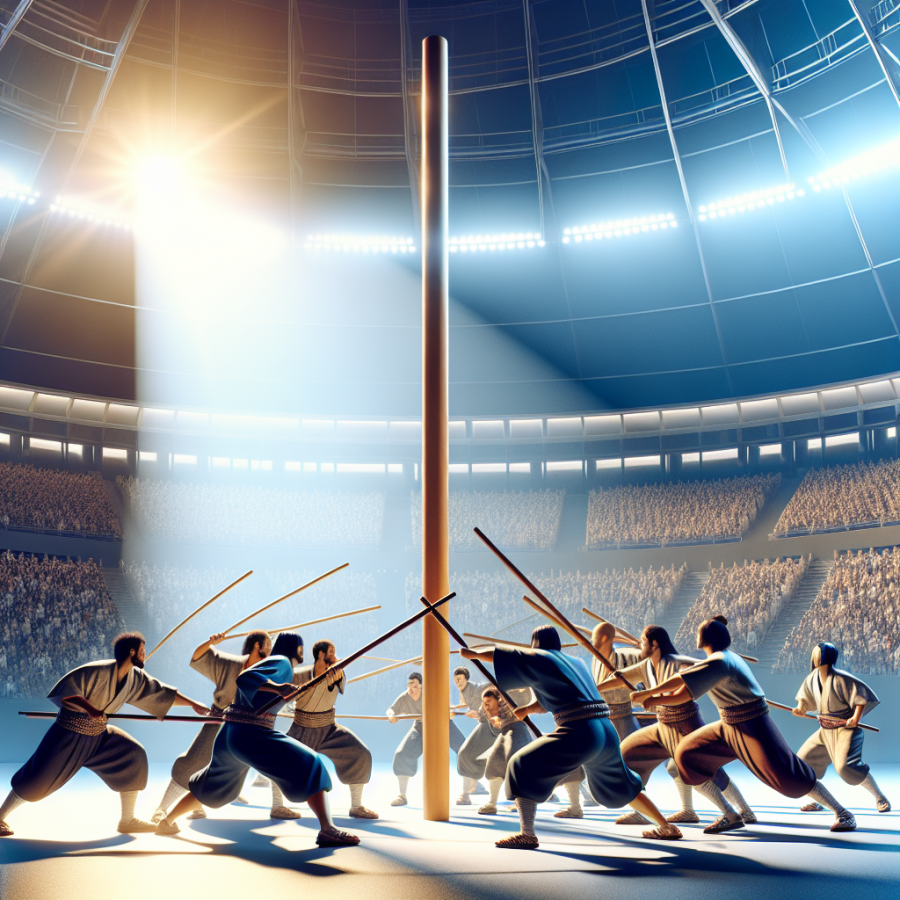Strategies and Skills: Mastering the Art of Bo-taoshi Victory
Bo-taoshi, an intense and exhilarating sport originating from Japan, combines elements of rugby, sumo, and martial arts, all centered around the objective of toppling or defending a pole. As athletes, or 'ninjas', on both offense and defense clash in this high-energy game, victory hinges on a fine-tuned mixture of strategy and skill. Here we will explore key techniques and approaches that teams might adopt to dominate in the chaotic yet structured world of Bo-taoshi.
**The Element of Surprise**
In Bo-taoshi, the ability to catch the opposing team off-guard can be a game-changer. Offensively, teams must create diversionary tactics to distract defenders and protect their pole rushers. This might involve feints or sudden changes in formation, calculated to throw the defense into disarray. These maneuvers require rigorous practice to ensure they appear spontaneous and convincing during the heat of competition.
**Synchronized Teamwork**
With a proverbial army of 75 players on the field, synchronization is the backbone of a winning Bo-taoshi strategy. The entire team must move as one organism. To accomplish this, they practice meticulously coordinated plays where attackers know precisely when to rush or defend, and pole support members work seamlessly to maintain their pole's position. Teams often employ hand signals or code words to communicate mid-game, as verbal instructions can be lost amid the chaos.
**Pole Techniques and Defense**
The pole, being the central objective, demands specialized skills to defend effectively. Pole defenders typically wrap their legs around the pole and use their weight to anchor it. This move requires incredible core strength and balance, and players often undergo specific training to enhance these physical attributes. Likewise, attackers who are specialized in climbing the pole must have the agility and grip to ascend amidst the chaos swiftly.
**Mental Fortitude and Focus**
Beyond physical prowess, a significant aspect of Bo-taoshi is the psychological battle. Players must maintain focus despite the relentless pace and chaotic nature of the sport. A lapse in concentration can lead to a quick defeat, so mental toughness is nurtured through stress-conditioning drills and meditation practices, enabling players to keep their cool and adhere to the team's strategic plan.
**Stamina and Conditioning**
The relentless intensity of Bo-taoshi requires outstanding stamina. Conditioning workouts that emphasize cardiovascular endurance, explosive speed, and muscular resilience are essential.
Read also:
Mastering the Art of Shurikenjutsu: A Ninja's Guide
Unraveling the Chaos: Inside the Thrilling World of Bo-taoshi
Bo-taoshi, a sport whose name translates directly to "pole-pulldown," is a dynamic and thrilling event that epitomizes the pinnacle of organized chaos in sports. Originating in Japan and traditionally played by cadets at the National Defense Academy of Japan, this high-energy game is more than just a test of strength; it involves deep strategic planning, agility, coordination, and an unyielding team spirit. With a history steeped in military training, bo-taoshi has evolved into a beloved competitive tradition that captures the hearts of participants and spectators alike.
The essence of the game is both simple and complex: two teams, each with 75 players, battle to topple their opponent's pole. The objective seems straightforward—lower the opposing team's pole to a thirty-degree angle from the ground. However, achieving this feat requires a precisely orchestrated mayhem, revealing layers of strategy akin to that found in a game of chess, albeit with an adrenaline-infused physical twist.
Bo-taoshi is split into two roles – attackers and defenders. Defenders are allocated into various positions with specific tasks: pole support, interference, barrier, and scrum disabler. The pole support team clings directly to the pole, holding it upright at all costs. Interference players focus on obstructing attackers, while barriers create a human wall that opponents must breach to get to the pole. Scrum disablers are specialized disruptors, throwing themselves into the attackers to break their momentum and dismantle their formations.
For the attackers, the strategy is just as intricate. As they charge toward the pole, they must act as a single unit despite the pandemonium. Special formations are employed, with some team members serving as ladders, allowing others to climb over them in an attempt to reach the top of the pole. Meanwhile, speed and agility players attempt to slip through the defense's barriers, drawing defenders away and creating opportunities for their teammates to advance.
The sport is not without its risks; from the high-flying acrobatics of the pole climbers to the all-or-nothing tackles of the scrum, injuries can be commonplace. Despite the apparent chaos, however, there is a strict adherence to rules and a code of respect among players. Safety measures and protective gear are mandated to minimize the potential for harm, showcasing the sport's evolution from raw contest to regulated competition.




